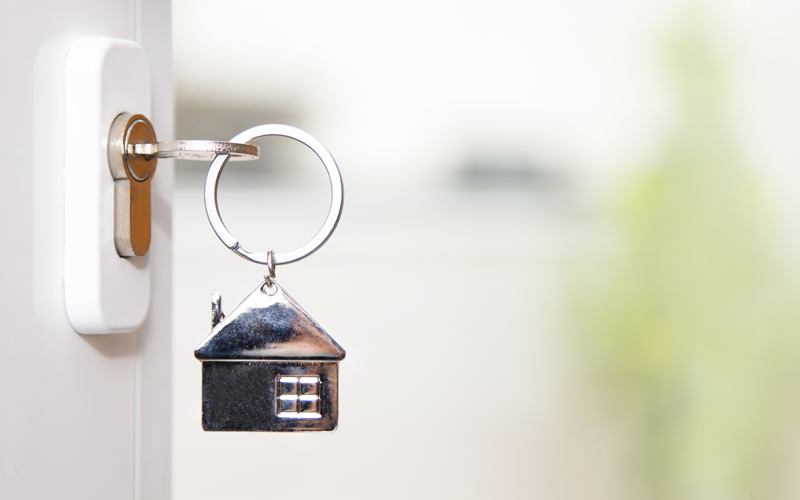- Your Money & Your Life
- Posts
- The Federal Budget is in surplus + Australians aren't mugs
The Federal Budget is in surplus + Australians aren't mugs
My Money Digest - 5 May 2023

Hi from London,
Let me declare upfront I’m a republican and believe we should have our own head of state… just make the Governor General Head of State which they technically now are anyway. Simple.
But I’m looking forward to tomorrow’s Coronation because I love the history of it and the Brits do this stuff so well. The pomp, pageantry and ceremony will no-doubt be spectacular… even if the weather forecast is more than a little on the damp side.
Last week I was explaining that Tuesday’s Reserve Bank meeting was touch and go on whether they’d raise interest rates or pause again. I explained it’s a tricky time because you don’t want rate hikes to tip the economy over the edge into recession.
The RBA is taking that gamble by lifting rates another 0.25 per cent this week to 3.85 per cent. The Board has now delivered an incredible 375bp of rate rises over just 12 months, which is an extraordinary amount of tightening.
In the lead up to the decision a Bloomberg survey showed 21 analysts expected no change to the cash rate in May and only nine forecasted a rate hike.
And it may not be the end of the increases as the RBA Governor retained a tightening bias. But it has to be said, the statement attached to the decision saw a watering down of the language of another rise.
In the Governor’s Statement accompanying the April Board meeting when the central bank paused, it was noted that, “the Board expects that some further tightening of monetary policy may well be needed to ensure that inflation returns to target”.
This week that line was modified to, “some further tightening of monetary policy may be required to ensure that inflation returns to target in a reasonable timeframe, but that will depend upon how the economy and inflation evolve”.
If - and it’s a big if - the inflation and jobs data stay in line or are weaker than the RBA’s forecasts, many analysts see the current 3.85 per cent as the peak in the cash rate. So, it will all be in the data.
Don’t forget there is still natural tightening to come down the big pipeline of fixed rate home loan rollovers in 2023 and 2024. The massive change from ultra low fixed rate home loans to significantly higher variable and new fixed loans will drain the cash flow of many home borrowers and spending decisions will be hit hard.
The RBA has kept their forecast profile for the unemployment rate unchanged, expecting it to increase gradually to hit around 4.5 per cent in mid 2025.
The RBA forecasts GDP economic growth to be 1.25 per cent this year and around 2 per cent over the year to mid 2025.
With the big banks already passing on this week’s rate rise, the average owner-occupier with a $500,000 loan and 25 years remaining will see their monthly repayments rise by another $78.
As this is now the 11th rate hike since last May, someone with a $500,000 debt at the start of the hikes has seen their repayments increase by a total $1,058 a month.
Expected increase in mortgage repayments

Source: RateCity.com.au. Based on an owner-occupier paying principal and interest with 25 years remaining. Starting rate is the RBA av. existing owner-occupier variable rate of 2.86% in April and assumes banks pass the hikes on in full.
The key now is to know what rate you’re paying after this latest round of hikes. So, according to RateCity.com.au these are your benchmarks:
The average existing owner-occupier variable rate will be 6.61 per cent (for those who haven’t negotiated since the start of the hikes).
A competitive variable rate will be under 5.5 per cent for owner-occupiers paying principal and interest.
A handful of lenders are likely to still offer rates under 5.25 per cent.
If someone with a $500,000 debt today and 25 years remaining on their loan refinanced from the average variable rate to one of the lowest in the market, RateCity estimates they could save up to $12,382 in the next two years.
This includes the costs of refinancing and assumes the cash rate moves in line with CBA’s forecast.
Someone with a $1 million loan refinancing from the average rate to one of the lowest could save an estimated $25,914 in the next two years.
Potential savings by refinancing
Based on an owner-occupier switching from the average rate of 6.61 per cent to a rate under 5.25 per cent. Includes switching fees.

Source: RateCity.com.au. Notes: based on an owner occupier paying principal and interest with 25 years remaining on their loan. Includes switching costs and assumes the cash rate continues to move in line with CBA’s forecasts.
NAB new customer variable rates for owner-occupiers – effective 12 May

Source: RateCity.com.au. Repayments are for an owner-occupier paying principal and interest with a $500,000 debt and 25 years remaining. New rates effective 12 May 2023.
Westpac variable rates for owner-occupiers – effective 16 May

Source: RateCity.com.au. Note LVR requirements may apply. Above rates are for new customers and are the lowest for each loan type.
ANZ variable rates for owner-occupiers – effective 12 May

Source: RateCity.com.au. Note LVR requirements may apply. Above rates are for new customers and are the lowest for each loan type.

What are the banks doing for savers?
NAB will increase the rates on both of its savings accounts, for new and existing customers.
NAB savings changes – effective 12 May

Source: RateCity.com.au. Note: conditions and balance caps apply for maximum rate on select accounts.
Westpac is increasing the rate on its Life account by 0.25 per cent, while it’s Spend&Save account for young adults will increase by 0.3 per cent.
The bank has increased the introductory rate on its eSaver account for new customers but left the ongoing rate for existing customers unchanged at an embarrassingly low 1.1 per cent.
ANZ is also being selective in passing on the 0.25 per cent increase to its Plus Save account. But all other ANZ savings rates, such as the Online Saver and Progress Saver, remain unchanged at this stage.
So it certainly pays to understand which saver account you should be in.
Westpac savings changes – effective 12 May

Source: RateCity.com.au. Note: conditions and balance caps apply for maximum rate on select accounts.
ANZ savings rate changes – effective 11 May

Source: RateCity.com.au. Note: conditions and balance caps apply for maximum rate on select accounts.

But fixed rate loans are falling
While variable home loan rates are rising, in a sign that rates have peaked and could soon be coming down, fixed rate home loans are falling.
The RateCity.com.au database shows lenders of all sizes have been trimming down their fixed rates in the last month, with 3-year fixed cuts the most popular category.
Market snapshot: fixed rate cuts vs hikes
Number of lenders that have changed at least one fixed rate in the last month

Source: RateCity.com.au. Note: some lenders have made both cuts and hikes.
As it currently stands, the lowest big four bank fixed rate is from ANZ at 5.49 per cent for 3 years, while the lowest fixed rate on the database is The Capricornian’s 3-year rate at 4.99 per cent.
Big four banks’ lowest rates for owner-occupiers

Source: RateCity.com.au. Note: rates are for new customers who are owner-occupiers paying principal and interest. LVR requirements apply. CBA’s lowest variable rate includes a $395 annual fee.
Lowest fixed rates on RateCity.com.au

Source: RateCity.com.au. Note: rates are for new customers who are owner-occupiers paying principal and interest. LVR requirements may apply.
While the majority of banks’ lowest rates are still variable, in the case of NAB and ANZ, their lowest rates are now fixed. But the catch is that you have to lock in for three years when most analysts are predicting we’re at the peak of the rate cycle and over the next three years virtually every analyst is forecasting rate cuts… CommSec reckons the cuts could start at the end of this year.
Australians aren’t mugs. As interest rates have risen, the popularity of fixing interest rates has dropped significantly. The proportion of new loans being fixed in entirety or as a proportion of the total loan has now fallen to record lows.
In April, just 15.6 per cent of loans had a fixed interest rate component. This compares to August 2021 when it peaked at 59.2 per cent.

The Federal Budget is in surplus… yep, you heard me right
Ahead of next Tuesday’s Federal Budget, remember last October when newly appointed Federal Treasurer Jim Chalmers brought down his first Budget as the new Government. There was the usual rhetoric of the economy in dire straits and the Budget deficit out of control and needing extreme action.
Despite all his doom and gloom, I bet him a bottle of red wine that this year’s Budget would be in surplus because he had seriously under-estimated the tax revenue from exports by ludicrously assuming iron ore exports would sell for $US55 a tonne and coal exports at $US50 a tonne. Both have been more than double and triple that assumption since then.
So, it was absolutely no surprise to me that the Budget is in surplus over the past year, with the 12 months to March 2023 showing a surplus of $1.034 billion.
That’s a $204 billion turnaround in two years.

So everyone should thank our exporters for making us the lucky country.
The latest figures show Australia’s trade surplus was a record $151.5 billion in the year to March, up from $122.7 billion a year earlier. Annual export earnings are up an even more impressive $143 billion.
The result was above market expectations with lower commodity prices in March failing to dampen the value of Australian resources exports.
Exports rose by 3.8 per cent in the month, driven by metal ores and minerals (up 11.6 per cent for the month), especially iron ore. Other major exports were mixed with a monthly gain in coal (+1.9 per cent) but a contraction in oil and gas ( 5.7 per cent).
Iron ore, coal and oil/gas make up an incredible 60 per cent of Australia’s total export market.
Rural exports recorded a solid gain, up 10.9 per cent to $A6.7 billion in the month with meat and grain driving the result.
Total imports rose by just 2.5 per cent, even though passenger vehicle imports jumped a staggering 23.9 per cent.
Property market continues its rebound
After falling 9.1 per cent between May 2022 and February 2023, Australian housing values look to have bottomed out, posting a second consecutive monthly rise. CoreLogic’s national Home Value Index (HVI) increased by half a percent in April, following a 0.6 per cent lift in March to be 1 per cent higher over the past three months.
Sydney increased 1.3 per cent in April and is leading the positive turn in housing conditions, with dwelling values rising each month since February. Sydney values are now 3 per cent higher than their January low. The four largest capital cities all recorded a rise in housing values over the rolling quarter.
Although housing conditions are looking more positive, values across most regions remain well below their recent cyclical highs. Hobart, where values are yet to improve, is now recording the largest drop from the recent market peak – down 13 per cent. Sydney dwelling values had recorded a 13.8 per cent drop from the market peak to the recent trough, however the 3 per cent rise in values over the past three months leaves the market now 11.2 per cent below the recent high. Brisbane has recorded the third largest decline, with values holding 10.7 per cent below their recent peak.

Source: CoreLogic.




